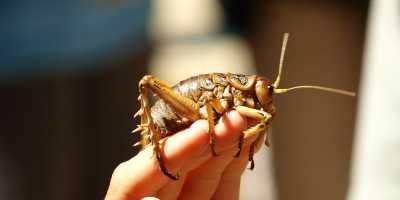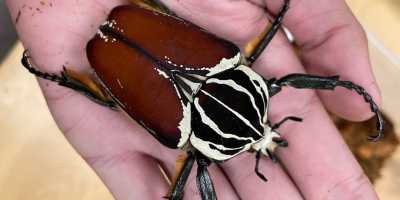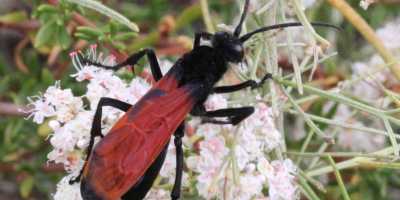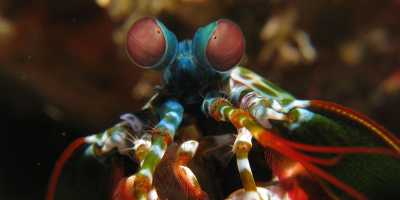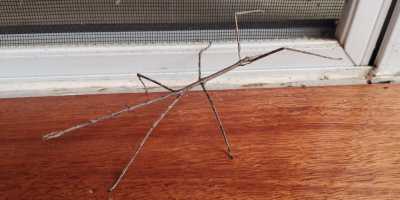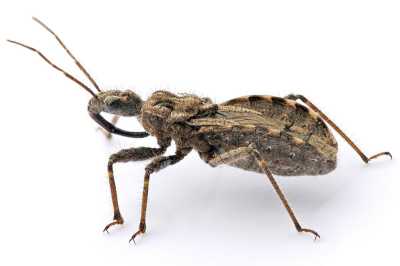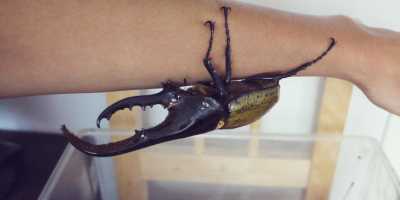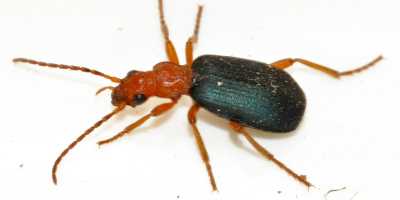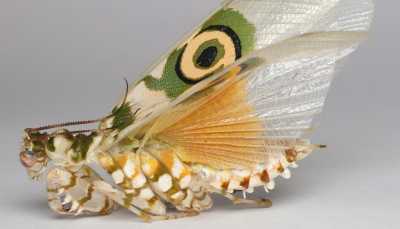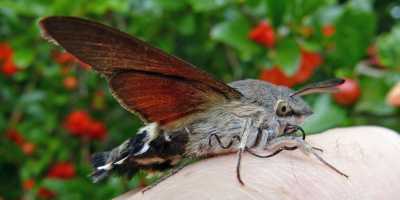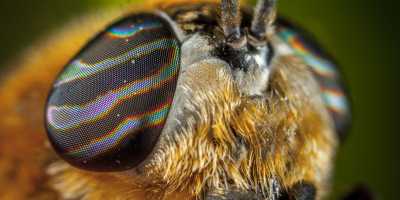 Photo by Egor Kamelev
Photo by Egor Kamelev
10 Fascinating Insects That Will Amaze You
Insects are among the most diverse and fascinating creatures on the planet. They come in all shapes sizes and colors, and have adapted to live in almost every environment imaginable. From the giant weta of New Zealand to the spiny flower mantis of southern Africa, these 10 curious insects showcase the incredible variety and adaptability of the insect world.
In this article we will take a closer look at each of these fascinating creatures, exploring their unique features, behaviors and adaptations that have allowed them to thrive in their respective habitats. Join us on a journey through the amazing world of insects, as we discover the giants, the assassins, the bombers and the mimics that make up this incredible group of animals.
-
Giant Weta
The Giant Weta is one of the heaviest insects in the world, with some species weighing up to 70 grams. They are also one of the longest insects, with a body length of up to 10 cm. Despite their size they are not harmful to humans and are considered endangered.
 jokertrekker CC BY 3.0, via Wikimedia Commons
jokertrekker CC BY 3.0, via Wikimedia Commons -
The name "weta" comes from the Maori language the indigenous people of New Zealand.
-
The Giant Weta has a lifespan of up to 9 months.
-
They are mainly herbivores, feeding on plants and fruits but some species have been known to eat insects as well.
-
The largest species of Giant Weta is the Little Barrier Island Giant Weta which is found only on Little Barrier Island in New Zealand.
-
The Giant Weta is a nocturnal insect and spends most of its day hiding in burrows or crevices.
-
-
Goliath Beetle
The Goliath Beetle is one of the largest beetles in the world, with some species reaching up to 11 cm in length. They are known for their distinctive horns which they use for fighting with other males over mating rights. They are found in many parts of Africa and are a popular pet among insect collectors.
 Fungus Guy, CC BY-SA 4.0, via Wikimedia Commons
Fungus Guy, CC BY-SA 4.0, via Wikimedia Commons -
The Goliath Beetle is named after the biblical giant Goliath, due to its large size.
-
There are several species of Goliath Beetles, with some having different colors and horn shapes.
-
Goliath Beetles are herbivores and their diet consists mainly of fruits and sap.
-
Male Goliath Beetles are known to emit a hissing sound when they feel threatened or are fighting with other males.
-
Despite their popularity as pets, Goliath Beetles are protected by many countries' laws due to their status as a threatened species.
-
Goliath Beetles are strong fliers and they are capable of flying up to several kilometers in search of food and mates.
-
-
Tarantula Hawk Wasp
The Tarantula Hawk Wasp is known for its painful sting, which is said to be one of the most painful in the world. They are also one of the largest wasps, with a wingspan of up to 11 cm. They are named after their habit of hunting tarantulas, which they paralyze with their sting and use as a host for their larvae.
 Millie Basden, CC BY 4.0, via Wikimedia Commons
Millie Basden, CC BY 4.0, via Wikimedia Commons -
The Tarantula Hawk Wasp is known for its painful sting which is said to be one of the most painful in the world.
-
They are also one of the largest wasps, with a wingspan of up to 11 cm.
-
They are named after their habit of hunting tarantulas, which they paralyze with their sting and use as a host for their larvae.
-
-
Mantis Shrimp
The Mantis Shrimp is a brightly colored marine crustacean known for its powerful punch, which can break through aquarium glass. They have a complex visual system and are able to see polarized light, which helps them detect prey and communicate with each other.
 prilfish from Vienna, Austria, CC BY 2.0 via Wikimedia Commons
prilfish from Vienna, Austria, CC BY 2.0 via Wikimedia Commons -
The Mantis Shrimp is not actually a shrimp, but a type of crustacean called a stomatopod.
-
They have extremely powerful punches that can reach speeds of up to 80 km/h and generate a force of over 1 500 newtons.
-
They have some of the most complex eyes in the animal kingdom with up to 16 different types of photoreceptor cells.
-
They are known to use their sharp claws to break through not only aquarium glass, but also shells of crabs and snails making them skilled predators.
-
Some species of Mantis Shrimp are able to produce a bright flashing display with their tail which is believed to be a form of communication.
-
They are found in warm waters around the world particularly in the Indo-Pacific region.
-
-
Walking Stick
The Walking Stick is an insect that resembles a twig or a branch, making it difficult for predators to spot. They are able to regenerate lost limbs and some species can reproduce without mating. They are found all over the world and can range in size from a few millimeters to over 30 cm in length.
 Binarysequence CC BY-SA 4.0, via Wikimedia Commons
Binarysequence CC BY-SA 4.0, via Wikimedia Commons -
The Walking Stick is not actually a stick but an insect that mimics the appearance of a twig or a branch to avoid detection by predators. They have a unique body shape that helps them blend in with their environment making them difficult to spot.
-
Walking sticks are able to regenerate lost limbs, which is a rare ability among insects. They can also shed their legs as a defense mechanism, distracting predators and allowing them to escape.
-
Some species of walking sticks are parthenogenic, meaning they can reproduce without mating. Females produce offspring that are clones of themselves, allowing them to rapidly increase their population in favorable conditions.
-
Walking sticks are found in many different habitats around the world, from tropical rainforests to deserts. They come in a variety of sizes, with some species measuring just a few millimeters and others reaching over 30 cm in length.
-
-
Assassin Bug
The assassin bug is a type of predatory bug that can be found in many different parts of the world. They are known for their unique method of hunting, which involves stabbing their prey with a long, sharp proboscis and injecting a powerful venom. Some species have been known to use their proboscis to defend themselves against larger predators as well.
 fir0002 flagstaffotos [at] gmail.com Canon 20D + Sigma 150mm f/2.8, GFDL 1.2, via Wikimedia Commons
fir0002 flagstaffotos [at] gmail.com Canon 20D + Sigma 150mm f/2.8, GFDL 1.2, via Wikimedia Commons -
Assassin bugs are part of the Reduviidae family which is one of the largest families of true bugs, with over 7, 000 species.
-
They are also known as "kissing bugs" in some parts of the world as they have been known to bite humans on the lips while they sleep.
-
Assassin bugs are considered beneficial insects, as they help control populations of other insects, such as mosquitoes and flies.
-
Some species of assassin bugs are able to camouflage themselves, making them difficult for prey to detect.
-
The venom of assassin bugs can be used in medicine as it contains enzymes that can break down blood clots and treat heart disease.
-
-
Hercules Beetle
The Hercules Beetle is one of the largest species of beetle in the world, with males growing up to 7 inches long. They are named after the Roman god Hercules because of their impressive size and strength.
 Novita Estiti from Tokyo Japan, CC BY 2.0 via Wikimedia Commons
Novita Estiti from Tokyo Japan, CC BY 2.0 via Wikimedia Commons -
The Hercules beetle is found in the tropical rainforests of Central and South America.
-
They have a hard exoskeleton which protects them from predators and can come in various colors, including green, black, and brown.
-
The larvae of the Hercules beetle can weigh up to 100 grams, making them one of the heaviest insects in the world.
-
Male Hercules beetles use their large horns to fight each other for mating rights with the winner earning the right to mate with females.
-
Despite their intimidating appearance, Hercules beetles are not harmful to humans and mainly feed on fruit and sap.
-
-
Bombardier Beetle
The Bombardier Beetle is a type of beetle that is known for its defensive mechanism. When threatened, they release a hot, noxious chemical spray from their abdomen that can deter predators.
 Francisco Welter-Schultes CC0 via Wikimedia Commons
Francisco Welter-Schultes CC0 via Wikimedia Commons -
The chemical spray released by Bombardier Beetles is a mixture of two chemicals, hydroquinone and hydrogen peroxide, that are stored separately in their abdomen and mixed together when needed.
-
Some species of Bombardier Beetles have been observed to aim their spray at the eyes or mouths of their predators, which can cause temporary blindness or irritation.
-
Bombardier Beetles are found all over the world and there are over 500 different species in the family.
-
Despite their powerful defense mechanism, Bombardier Beetles are still preyed upon by certain animals such as birds, toads, and some species of ants.
-
Some cultures have used the chemical spray of Bombardier Beetles for medicinal purposes such as treating skin conditions and infections.
-
-
Spiny Flower Mantis
The spiny flower mantis, also known as the walking flower mantis, is a species of praying mantis known for its colorful appearance and unique body shape. They are found in southern and eastern Africa and can mimic flowers to blend in with their surroundings, making them difficult to spot. They have spiny protrusions on their legs and a flattened, leaf-like body.
 Yasunori Koide, CC BY-SA 4.0, via Wikimedia Commons
Yasunori Koide, CC BY-SA 4.0, via Wikimedia Commons -
The spiny flower mantis is known for its unique body shape and colorful appearance, which allows it to blend in with flowers in its environment.
-
They are found in southern and eastern Africa particularly in countries like South Africa and Zimbabwe.
-
Spiny flower mantises have spiny protrusions on their legs, which they use to grip onto branches and other surfaces.
-
Their flattened leaf-like body shape helps them to camouflage themselves in their surroundings, making them difficult for predators to spot.
-
Spiny flower mantises are also popular in the pet trade due to their unique appearance and interesting behaviors.
-
-
Hummingbird Hawk-Moth
The hummingbird hawk-moth is a species of moth found in many parts of the world including Europe, Africa and Asia. They are known for their ability to hover in the air while feeding on nectar, much like a hummingbird. They have long narrow wings and a long proboscis which they use to feed. They are also known for their rapid wingbeats which can reach up to 70 beats per second.
 Andrea Bonifazi, CC BY-SA 4.0 via Wikimedia Commons
Andrea Bonifazi, CC BY-SA 4.0 via Wikimedia Commons -
The hummingbird hawk-moth is sometimes mistaken for an actual hummingbird due to its similar appearance and behavior.
-
They are active during the day, which is unusual for most moth species that are nocturnal.
-
They can fly at high altitudes, sometimes up to 4, 500 meters above sea level.
-
Their larvae feed on plant species in the bedstraw family, which includes popular garden plants such as cleavers and lady's bedstraw.
-
They have been observed using visual cues to locate flowers, and they are also attracted to the scent of flowers.
-
The world of insects is full of surprises and curiosities, and we've only scratched the surface with these 10 fascinating examples. From the strength of the Hercules Beetle to the stealth of the Walking Stick, and the defensive mechanisms of the Bombardier Beetle and the Tarantula Hawk Wasp, these insects showcase the diversity and complexity of life on Earth.
Whether you're a fan of nature, science, or simply curious about the world around you, we hope this article has sparked your interest in these amazing creatures and inspired you to learn more about them.
